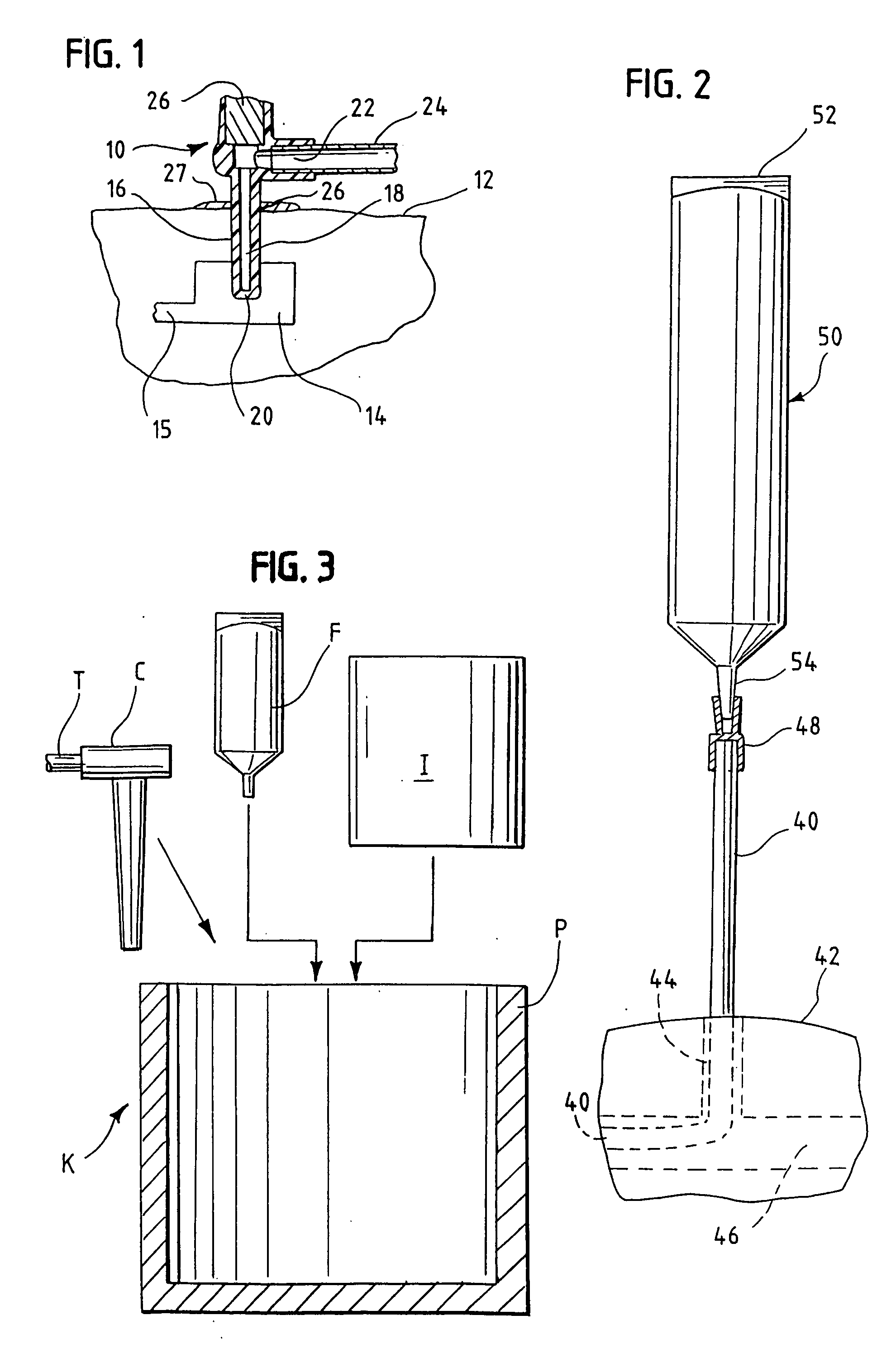High viscosity antibacterials
- Summary
- Abstract
- Description
- Claims
- Application Information
AI Technical Summary
Benefits of technology
Problems solved by technology
Method used
Image
Examples
Embodiment Construction
[0016] In accordance with one aspect of this invention, a low viscosity, relatively volatile topical antibacterial (antiseptic) agent such as isopropyl alcohol or ethyl alcohol comprises an antibacterial (antiseptic) fluid or gel formulation having an elevated viscosity by a gelling agent. Preferably, the elevated viscosity may be more than 150,000 centipoises (cp), and preferably of greater viscosity, such as at least about 170,000 cp. The gel may be more self-supporting than prior gels, essentially without flow characteristics at room temperature until it is disturbed. This higher viscosity gives superior results to lower viscosities, reducing the evaporation of common disinfectant agents such as isopropyl alcohol, ethyl alcohol, iodine, etc. As these topical agents cease disinfecting as soon as they evaporate away from the skin, by this invention we have extended the disinfecting activity of these topical agents and hence their ability to impart higher levels of disinfection.
[00...
PUM
| Property | Measurement | Unit |
|---|---|---|
| Fraction | aaaaa | aaaaa |
| Concentration | aaaaa | aaaaa |
| Viscosity | aaaaa | aaaaa |
Abstract
Description
Claims
Application Information
 Login to View More
Login to View More - R&D
- Intellectual Property
- Life Sciences
- Materials
- Tech Scout
- Unparalleled Data Quality
- Higher Quality Content
- 60% Fewer Hallucinations
Browse by: Latest US Patents, China's latest patents, Technical Efficacy Thesaurus, Application Domain, Technology Topic, Popular Technical Reports.
© 2025 PatSnap. All rights reserved.Legal|Privacy policy|Modern Slavery Act Transparency Statement|Sitemap|About US| Contact US: help@patsnap.com

